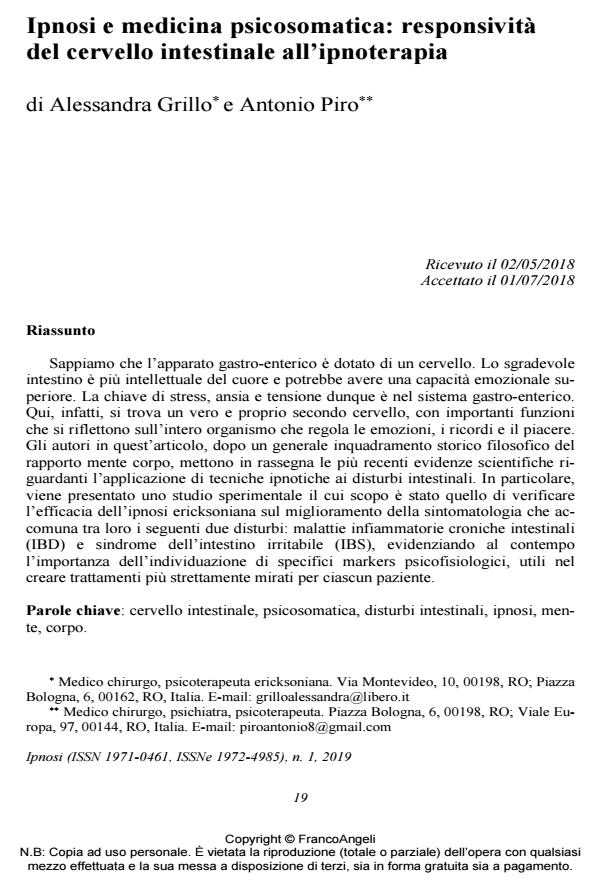Hypnosis and psychosomatic medicine: responsiveness of intestinal brain to hyp-notherapy
Journal title IPNOSI
Author/s Alessandra Grillo, Antonio Piro
Publishing Year 2019 Issue 2019/1
Language Italian Pages 22 P. 19-40 File size 246 KB
DOI 10.3280/IPN2019-001002
DOI is like a bar code for intellectual property: to have more infomation
click here
Below, you can see the article first page
If you want to buy this article in PDF format, you can do it, following the instructions to buy download credits

FrancoAngeli is member of Publishers International Linking Association, Inc (PILA), a not-for-profit association which run the CrossRef service enabling links to and from online scholarly content.
We know that the digestive system is equipped with a brain. The unpleasant in-testine is more intellectual than the heart itself and may even have a higher "emo-tional" capacity. The key of stress, anxiety and tension, then, can be found in the bowels. In fact, this is where another true brain is located, with important functions that affect the entire organism that controls emotions, memories and pleasure. The authors of this article, after a general historical and philosophical overview of the relationship between mind and body, list the most recent scientific evidence con-cerning the use of hypnosis techniques for intestinal distress. More specifically, an experimental study that aims to verify the effectiveness of Ericksonian hypnosis on the improvement of the symptomatology that combines together the Inflam-matory Bowel Disease (IBD) and the Irritable Bowel Syndrome (IBS), and that in the meantime points out the importance of spotting specific psychophysiological markers that are useful for the creation of more focused treatments for every pa-tient.
Keywords: Intestinal brain, psychosomatic medicine, intestinal distress, hypnosis, mind, body.
Alessandra Grillo, Antonio Piro, Ipnosi e medicina psicosomatica: responsività del cervello intestinale all’ipnoterapia in "IPNOSI" 1/2019, pp 19-40, DOI: 10.3280/IPN2019-001002